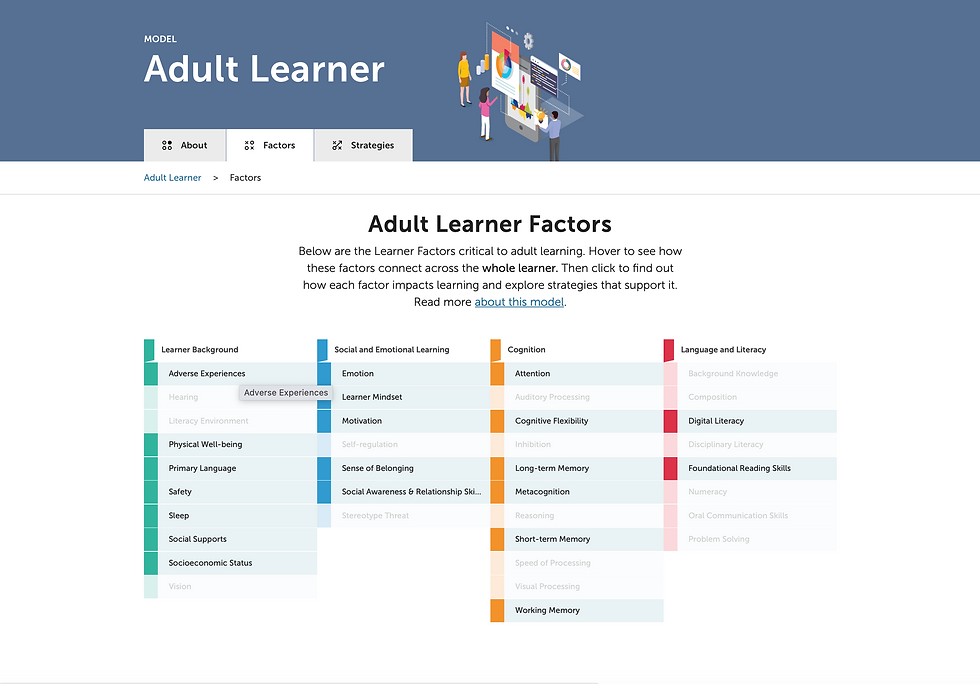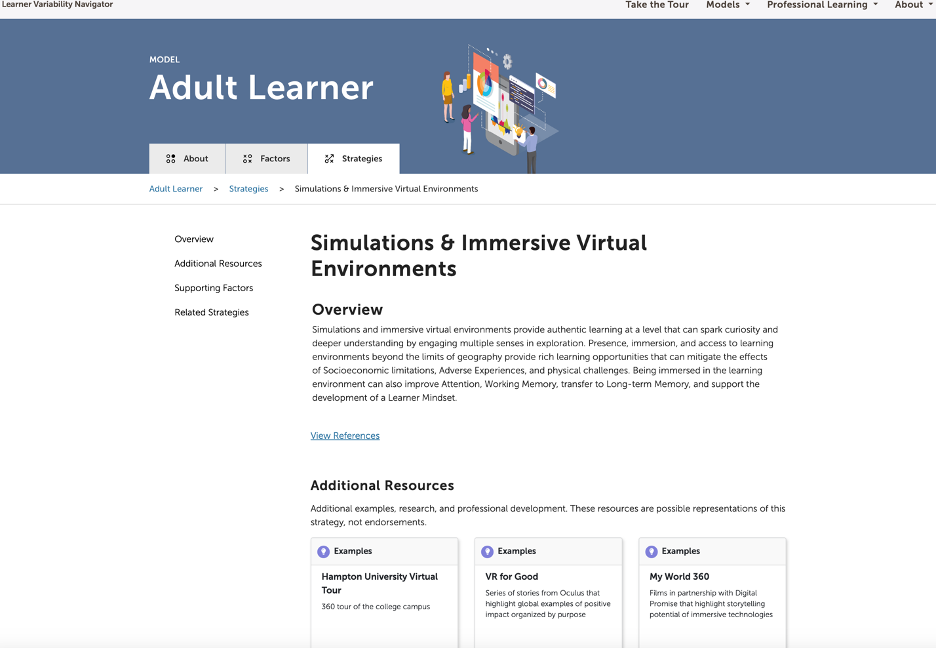Review of the Learner Variability Navigator (LVN)
- brandi berland
- Mar 11
- 4 min read
Updated: Apr 6

In January 2019, the world faced significant challenges, particularly for many Americans and people around the globe, due to the COVID-19 outbreak. This crisis disrupted daily life entirely, leading to widespread lockdowns in schools and businesses and limiting human contact. Many teachers and students found themselves in an unfamiliar situation, struggling to adapt to instruction in a digital format. Amid the fear and anxiety about the future, a new appreciation and understanding developed over time.
The shutdown compelled educators nationwide to integrate technology into their teaching methodologies. Although numerous individuals faced challenges and setbacks during this transition, these experiences provided invaluable insights. This experience revealed this previously unexplored avenue. Students of all ages had the opportunity to engage directly with virtual learning, as Cacicio et al. (2022) observed that the pandemic had unveiled "an untapped opportunity to meet the needs of learners more effectively through flexible programming, digital skills development, and personalization of learning" (p. 56).
This new perspective stimulated a more profound investigation into the interconnection between technology and education. Given the vast array of tools and platforms accessible to educators, technology has significant potential advantages. Considering the availability of innovative and established technologies, a critical question arises: How can one effectively select the appropriate tools?
It is essential to consider learners' diverse cognitive, physical, cultural, social, and psychological needs. Designing learning experiences that offer relatable, real-world connections promotes meaningful learning opportunities. While this task may seem daunting, excellent resources are available to help educators effectively address these challenges. With so many tools available today, I was introduced to one resource I would like to focus on and discuss, which I found extremely useful.
The Digital Promise Adult Learner Model was developed by the Learner Variability Project (LVP). The model synthesizes research from the learning sciences across four key areas: literacies, cognition, social-emotional factors, and learner background (Cacicio et al., 2022, p. 57). Their designed Learner Variability Navigator offers educators research-based strategies to meet the needs of adult and younger learners from pre-K to grade 12.
My exploration of the website began with tempered expectations. As my time in education has taught me, there is much more to learn from every theory, technology, and tool in education. There are extensive amounts. It is not easy to decide when and how to use them. Further, let's be honest: it outright overwhelms professionals in the number of choices. Yet, I know selecting the right tool and pedagogy makes for effective and meaningful instruction for learners. However, addressing the extensive needs of learners, especially adult learners, is not easy. So, I began exploration with no specific learner in mind, just curiosity about how the site would address adult learners' adverse experiences. Below are the screenshots of the learner variability navigator and my experience to explore adult learners' adverse experiences.



The site yielded 63 strategies for this one factor (adverse experiences). The depth and amount of guidance are impressive. Further, it goes beyond just strategy suggestions. For example, I clicked on Simulations & Immersive Virtual Environments; see the results below.


Reviewing the additional resources provided by my search, I observed that a few hyperlinks to examples were non-functional; however, most operated effectively. This resource functions as an exceptional tool for educators and designers alike. While exploring the website, I encountered an impressive array of valuable information accessible to users. The overview, additional resources, supporting factors, and related strategies equip users with essential design knowledge and tools to consider. The site assists users in contemplating and addressing the diverse needs of adult learners. The primary objective of utilizing technology tools is to enhance the learning outcomes of the instructional process. When the design effectively accommodates the learner's needs, it fosters engagement and facilitates connection, often resulting in learner knowledge acquisition.
"Adopting a comprehensive learner-centric approach is essential for promoting high-quality, technology-enhanced instruction to enhance adult learner outcomes within the educational sector" (Cacicio et al., 2022, p. 57). However, to implement this approach effectively, it is imperative to consider the learner and the various factors influencing their cognitive, social, cultural, and psychological abilities (Cacicio et al., 2022). Education professionals universally recognize the significance of practical resources in this field. Sharing such resources becomes particularly crucial given the demands of instructional development. Cacicio et al. (2022) further emphasized, "Educators are committed to this work; still, it is well documented that instructors often struggle to meet the complex needs of the adult learner population due to limited time and resources" (p. 57). While this resource may not fully resolve this multifaceted issue, it is a beneficial tool for instructional design and other educational practitioners. It assists in addressing the varied needs of learners, thereby fostering a more personalized instructional approach for adult learners. I highly recommend examining this resource, as it offers well-researched strategies worthy of consideration. Instructional technology is an ever-evolving landscape, yet the principles and foundational theories guide designers in developing instruction to meet the needs of learners and resources like this are vital to have in your tool belt.
References
Cacicio, S., Shell, A., & Tare, M. (2022). Beyond frameworks: supporting adult educators to leverage technology and customize the learning experience. Adult Literacy Education the International Journal of Literacy Language and Numeracy, 4(1), 56–61. https://doi.org/10.35847/scacicio.ashell.mtare.4.1.56



Comments